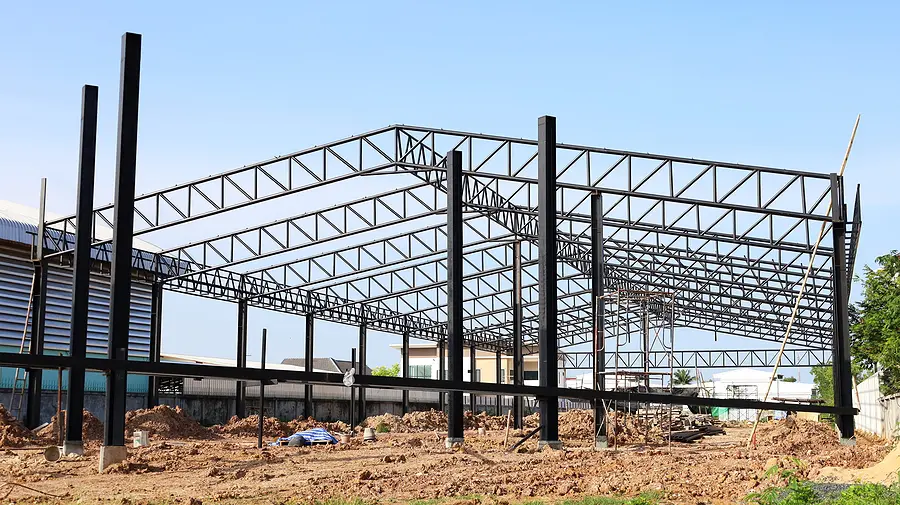
Steel building kits have revolutionized construction by offering an efficient, cost-effective, and durable alternative to traditional stick-built structures. Whether you’re planning to erect a workshop, agricultural barn, retail space, or even a home, a pre-engineered steel building kit streamlines the process from design through installation. This comprehensive guide explores what steel building kits are, their advantages, key components, design considerations, and tips for a successful project.
What Is a Steel Building Kit?
A steel building kit is a pre-engineered package that includes all the structural components needed to assemble a building’s framework and envelope. Major elements typically include:
- Primary Frames: Rigid “I-beam” rafters and columns that form the main skeleton.
- Secondary Purlins & Girts: Horizontal steel members that support the roof and walls.
- Roof & Wall Panels: Corrugated steel sheets or insulated panels for weather protection.
- Fasteners & Accessories: Bolts, screws, anchors, flashing, trim, and sealants.
- Optional Add-Ons: Doors, windows, skylights, insulation, and interior partitions.
Because each kit is engineered to precise specifications—based on your chosen dimensions, load requirements, and local building codes—the structural integrity and weather resistance are assured before delivery.
Key Advantages of Steel Building Kits
1. Cost Efficiency
- Reduced Material Waste: Factory-cut components fit perfectly, eliminating on-site scrap.
- Lower Labor Costs: Simplified assembly means fewer man-hours and trades needed.
- Competitive Pricing: Bulk purchasing and streamlined manufacturing translate to lower per-square-foot costs compared to conventional construction.
2. Speed of Construction
With components pre-cut, pre-drilled, and clearly labeled, erection timelines shrink dramatically—often by 30–50%. A small crew can assemble the primary steel frame in days, with weather-tight enclosure achieved in just weeks.
3. Durability & Low Maintenance
Steel resists rot, mold, termites, and fire better than wood. Galvanized or color-coated panels withstand corrosion and fading, requiring only occasional cleaning and inspection to look and perform like new.
4. Design Flexibility
Modern engineering software allows virtually unlimited spans, clear-span interiors (no interior columns), and customized roof pitches or eave heights. You can tailor the kit to function as an airplane hangar, a retail showroom, or a multi-bay garage.
5. Sustainability
Steel is 100% recyclable, and many manufacturers use significant recycled content. Efficient fabrication reduces on-site disturbance and debris, making steel kits an eco-friendly choice.
Applications for Steel Building Kits
- Agricultural: Barns, storage sheds, livestock shelters, equipment garages.
- Commercial & Industrial: Warehouses, distribution centers, manufacturing plants, truck terminals.
- Retail & Office: Showrooms, strip centers, fast-casual restaurants, offices.
- Residential & Recreational: Garages, workshops, RV storage, gyms, community centers.
- Institutional: Schools, fire stations, municipal maintenance facilities.
No matter the end use, steel kits adapt to high-clearance needs, multi-door arrangements, mezzanines, and interior build-outs.
Design & Engineering Considerations
1. Local Building Codes & Permits
Ensure your kit meets wind, snow, seismic, and flood requirements for your jurisdiction. Most reputable suppliers offer engineered drawings stamped by a licensed engineer.
2. Foundation Requirements
Steel buildings require a flat, level pad—typically a poured concrete slab or footings with grade beams. Foundation design must account for building loads and soil conditions.
3. Insulation & Energy Efficiency
While bare steel panels offer simplicity, you can enhance comfort and efficiency with:
- Insulated Metal Panels (IMPs): Factory-laminated foam cores for R-values up to R-24.
- Spray Foam or Blanket Insulation: Applied after erectors finish the shell.
- Reflective Radiant Barriers: Installed under roof panels to reduce heat gain.
4. Doors, Windows & Openings
Plan the number, size, and location of overhead doors, man doors, and windows. Pre-framed openings simplify installation and help maintain structural performance.
5. Interior Build-Outs
Steel kits provide a blank canvas. Whether you need office partitions, plumbing, electrical runs, or HVAC ducts, coordinate with subcontractors early to locate furring channels or Z-stud attachments.
Steps to a Successful Steel Kit Project
- Define Your Needs
- Determine clear-span widths, roof style (gable, single slope, arch), eave height, and bay spacing.
- Obtain Multiple Quotes
- Compare suppliers on price, lead time, engineering services, and warranty.
- Review Engineering Drawings
- Verify dimensions, load ratings, anchor bolt layouts, and panel profiles.
- Prepare the Site
- Excavate, level, and pour foundations per the engineer’s plan. Include utilities as needed.
- Assemble the Frame
- Erect columns and rafters, secure purlins and girts, and install bracing per manufacturer instructions.
- Enclose the Building
- Attach roof and wall panels, seal seams, and install trim.
- Complete Interior & Exterior Finishes
- Add insulation, doors, windows, gutters, and any interior build-outs.
- Inspect & Maintain
- Schedule periodic checks of fasteners, seals, and panel integrity to catch issues early.
Hiring experienced erectors—either recommended by the kit supplier or a local general contractor—ensures alignment, squaring, and adherence to safety protocols like fall protection and crane operations.
Common Pitfalls to Avoid
- Skipping Permits: Operating without proper approvals can lead to fines and forced demolition.
- Under-sized Foundation: Inadequate footings cause settling and misalignment.
- Poor Drainage: Water pooling around the slab accelerates corrosion.
- Improper Fasteners: Using generic screws instead of manufacturer-specified self-drilling, neoprene-sealed fasteners can lead to leaks.
- Neglecting Thermal Breaks: Direct metal-to-concrete contact can introduce condensation risks.
Vigilance in planning and installation prevents these costly errors.
Conclusion
Steel building kits empower property owners in NYC and beyond to erect durable, versatile structures faster and more affordably than traditional methods allow. With clear-span interiors, recyclable materials, and low maintenance, these kits suit a wide range of applications—from commercial warehouses to backyard workshops. By understanding design requirements, working with reputable suppliers, and adhering to best practices during site preparation and erection, you can enjoy decades of reliable performance and minimal upkeep.
If you’re ready to invest in a resilient, customizable building solution, explore steel building kits—the smart choice for today’s construction challenges.